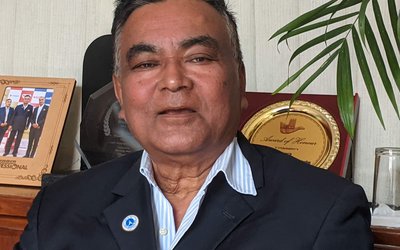More on Interview



Secretary to the Ministry of Science and Technology Dr. RAM HARI ARYAL, who is also renowned population expert, spoke to NEW SPOTLIGHT about the state of population in Nepal and family planning. Excerpts:
How do you evaluate Nepal’s population policies?
Population policies have become the integral part of development in Nepal since the first plan, 1956-61, and they have been explicitly linked in the development planning since the third plan, 1965-70. Although the first and second plans focused on resettlement issues, the third plan focused on introduction of more systematic family planning in 1968. From fourth to seventh plan, they addressed both family planning and development as an integral part to control population growth rate and manage migration.
What major changes have happened over the years?
In 1992/97, the eighth plan developed the revised population strategy and addressed consequences of high population growth rate and focused on economic and social development to reduce the fertility. Ninth plan stressed the need for Population Perspective Plan and develop small and quality family norms, integrate population concerns into development process and manage migration. Nepal has passed though several stages of the process.
What is the demographic situation of Nepal now?
One can see a lot of positive changes. Fertility has drastically declined -- it is now 3.3. And age at marriage has gone up among both males and females. The census will bring more interesting results. According to Family Health Survey Report 1996, contraceptive use now reached 48 percent. Legalization of abortion also helped to reduce the fertility.
How do you look at the progress in terms of infant mortality?
Infant mortality rate has also declined over the years, as it is now 48 deaths per 1000 lives. Nepal’s population size is going up. It is very interesting to see the patterns of population as the number of young population is still higher.
What are the demographic challenges before Nepal?
One of the challenges is high population growth rate. Another problem is early marriage and early child birth. Nepal needs to focus to reduce this. There are also challenges for increasing old age population and displaced population. There is the need to reduce high infant mortality and maternal mortality. The uneven distribution of the population will also create the problems as there is rapid a urbanization and migration is causing challenges. One of the major opportunities lies before Nepal is demographic bonus and population momentum.



